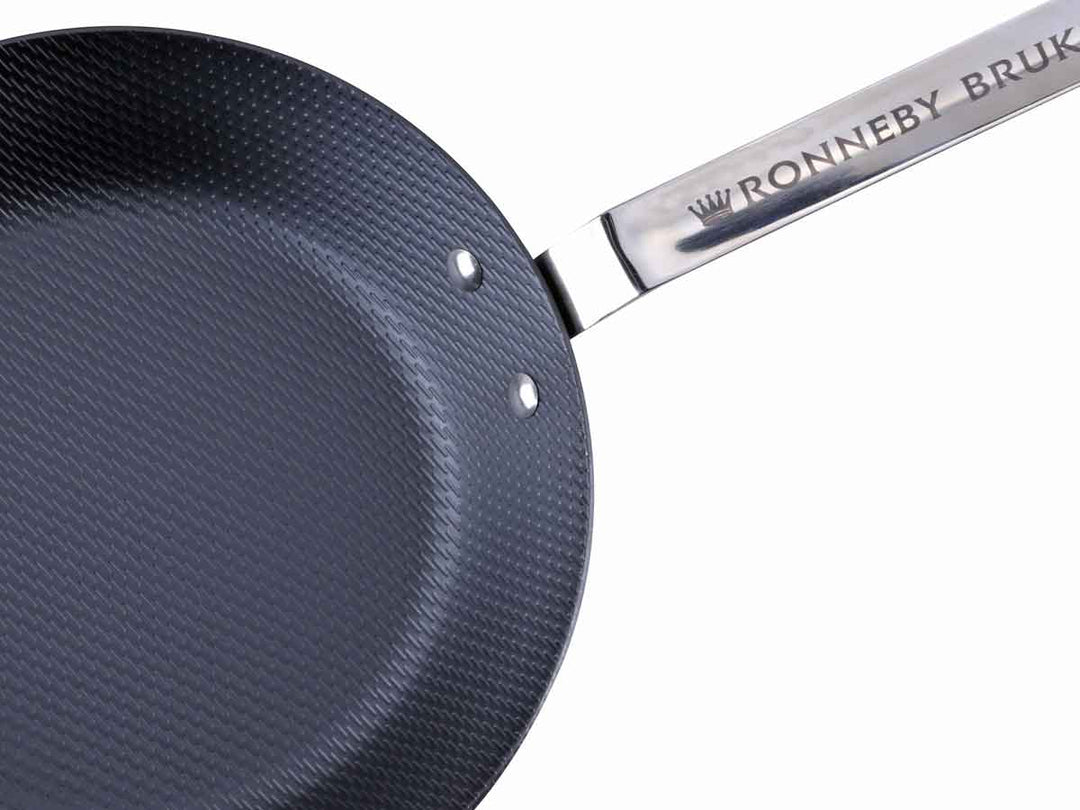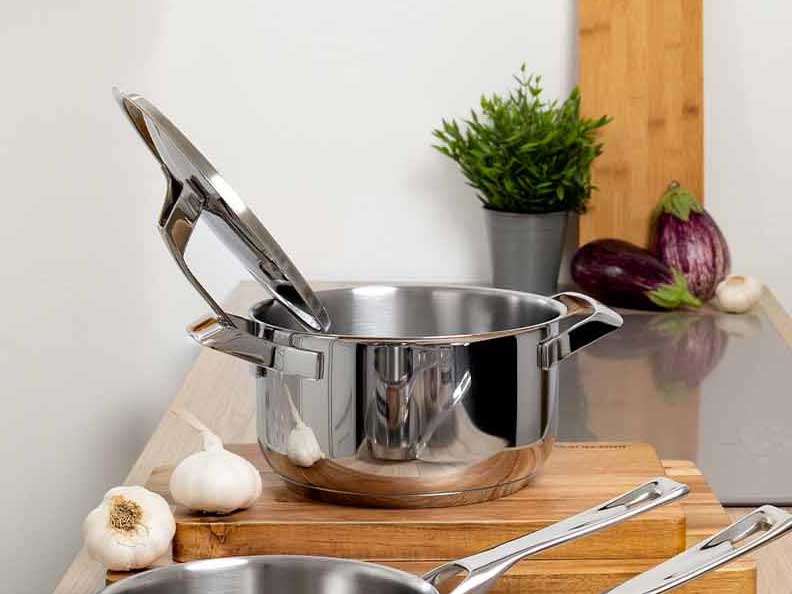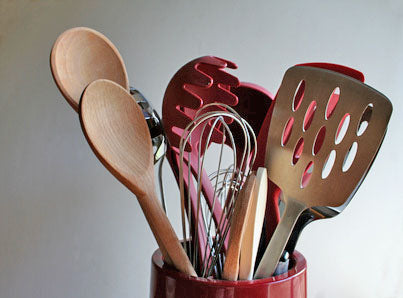iron (carbon steel)
iron (carbon steel)
First, a clarification of terms: when iron pans are mentioned in general, steel pans / carbon steel pans are usually meant; steel pans should not be confused with stainless steel pans. Carbon steel is alloyed iron with a low carbon content and is easy to form / forge. Iron, on the other hand, has a higher carbon content than steel and is good for casting (see cast iron pans), but less suitable for forming and forging, as is common with "iron pans".
However, since the term "iron pan" has become so common, it will be used here, albeit not quite correctly. So the following applies: “iron pan” = steel pan ≠ stainless steel pan
Advantages of an iron pan
+ extremely durable
+ scratch resistant
+ lighter than a classic cast iron pan
+ Frying properties improve with longer use
Disadvantages iron pan
- may rust
- Not suitable for dishwashers
- usually has to be burned in before first use
- Food can stick
- prone to bottom deformation in case of overheating or uneven heating
Iron pan has to be seasoned and you need to get used to it
Before using it for the first time, a new iron pan must be seasoned, otherwise all the food will hopelessly stick and burn.
Especially those who switch from a non-stick coated pan to an iron pan should take some time to familiarize themselves with the frying properties of an iron pan. This can save you potentially frustrating frying mishaps.
As soon as you have seasoned the new iron pan well and got used to the frying behavior of an iron pan, you can prepare almost any food in it, be it meat, fish, vegetables or even egg dishes. As with cast iron, patience and sensitivity are the key when frying.
Heat up slowly: This will prevent the iron pan from warping
As explained above, iron pans are made of steel. For this purpose, a piece of sheet steel is brought into the shape of a pan using suitable forming and forging techniques. Since the actually flat piece of sheet metal was forced into the shape of a pan with a lot of force, there is a certain material tension in the steel of the pan. If the iron pan is heated, the metal expands and further material stresses occur. If you heat your iron pan too quickly, too much or even unevenly (wrong positioning on the stove), you run the risk of it becoming permanently warped. Steel is also not as good a conductor of heat as aluminum, for example. So give the material some time to absorb and distribute the heat.
Caution is particularly important on induction cookers: induction cookers usually have circular coils. So only a ring-shaped part of the floor is heated. This ring-shaped part expands faster and more than the unheated part. Excessive heating can therefore lead to permanent deformation of the bottom of the iron pan! Therefore never use the power/booster level! Always heat up slowly at a maximum of 2/3 of the maximum power, e.g. level 6 of 9. Pay particular attention to always correctly and centrally positioning the pan on the cooking zone.






